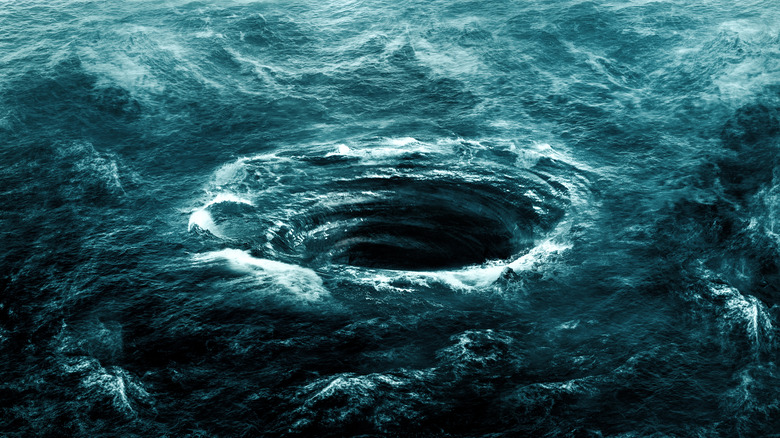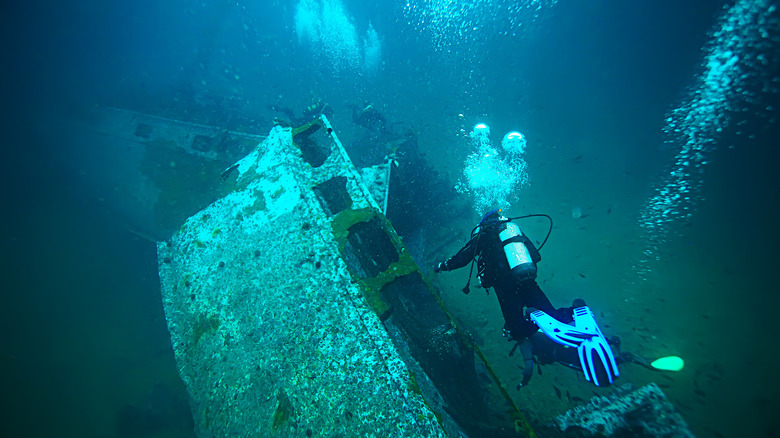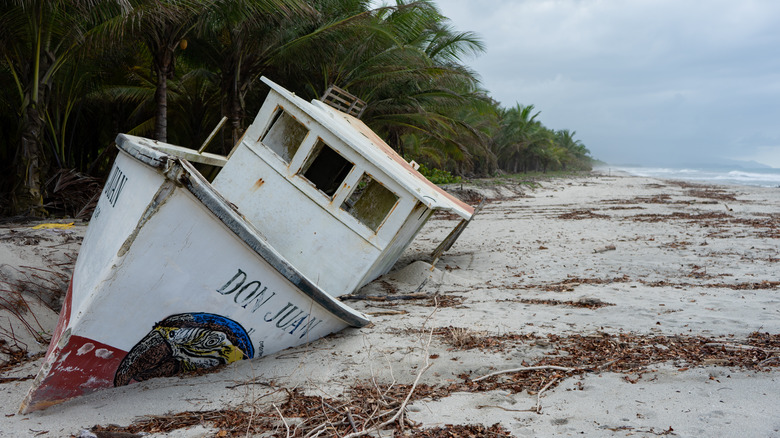The Bermuda Triangle Theory That Changes Everything
The Bermuda Triangle has been blamed for mysterious disappearances and wrecks going back to the 1609 shipwreck of the Sea Venture (via NBC12). In reality, this supposed hotspot doesn't actually have a higher rate of losses than any other place in the world, according to Skeptoid, and the Coast Guard doesn't recognize the location as a hazardous place of any significance. The concept of the Bermuda Triangle only goes back to the 1950s, and the name didn't appear until the '60s — along with evocative nicknames such as the Devil's Triangle, Limbo of the Lost, the Twilight Zone, and Hoodoo Sea, according to The New York Times.
But there are, of course, some shipwrecks in the area — the Sandra in 1950, the USS Cyclops in 1918, and the S.V. Spray in 1909, to name a few — as well as some plane crashes (via Bermuda Attractions). Some people even believe Amelia Earhart disappeared in the Bermuda Triangle, according to Reference — never mind that she was flying over the Pacific Ocean, not the Atlantic. Is there any unified explanation for these wrecks and bizarre disappearances?
The methane hypothesis
One explanation stands out for being semi-plausible (and it's not alien abductions or Atlantis). The hypothesis is that the sea floor around Bermuda contains large stores of methane gas which occasionally erupt to the surface, according to The New York Times. The bubbles from this gas rising up could disturb ships, and a large enough eruption could actually cause water to move away from the ship, sinking it. If highly flammable methane rises up in the air, it can even ignite — perhaps via a spark from a passing airplane engine.
This may sound implausible, especially when you consider the more common wreck explanations of mechanical error and foul weather — after all, Bermuda happens to sit in an area of the world known as Hurricane Alley (via The Bermudian). But this natural phenomenon exists elsewhere. Off the coast of Norway, gigantic underwater craters — up to a half-mile wide and 150 feet deep — are thought to have been created by the eruption of methane caches, known as methane hydrates, below the sea's sediment, according to National Geographic. Such explosions may have put nearby ships at risk. Similar craters have been found in Siberia, Live Science reported.
Bermuda's methane stores
But what about around Bermuda? "Gas hydrate is known to exist along the US North Atlantic continental margin, with a very large province on Blake Ridge (north of the Bermuda Triangle)," said Earth scientist Benjamin Phrampus to Live Science. A 2003 study using model ships found that bubbles from gas leaks like these could sink full-size ships under the right conditions.
However, Phrampus added, no large methane eruptions have been reported since the end of the last ice age, about 20,000 years ago. "I personally see it as an interesting theory and nothing more," he said to Live Science.
But those methane eruptions may become more common. As the planet heats up due to fossil fuel-driven climate change, methane hydrates may erode, according to the US Department of Energy. The full implications of this aren't clear — the department notes that this is an under-studied topic — but, just perhaps, the real danger of the Devil's Triangle is still to come.


